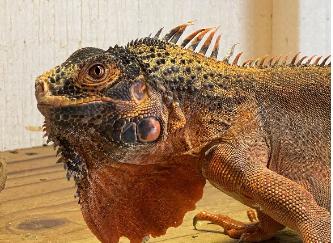How Do You Know if a Lizard is a Green Iguana? by Curtis Curly-tail

Hello, out there, friends and fans! It’s me, Curtis Curly-tail! Today, I wanted to ask you if you knew that Green Iguanas, Iguana iguana, come in different colors? And, if they come in different colors, how do you tell if a lizard is a green iguana? You look for the subtympanic scale. “What is that?” […]
Which Iguana is Which?

Iguanas are an important part of my life. They are featured in the children’s book I wrote called The Dragon of Nani Cave, which is an adventure tale starring curly-tail lizards ,Gene and Bony, who live on Cayman Brac. I weave the science of the island into the story, because science can be fun! I […]